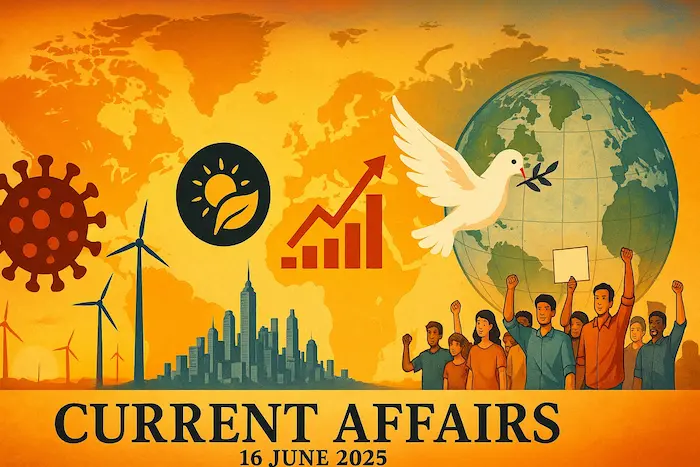1. Pradhan Mantri Ujjwala Yojana (PMUY) – Governance
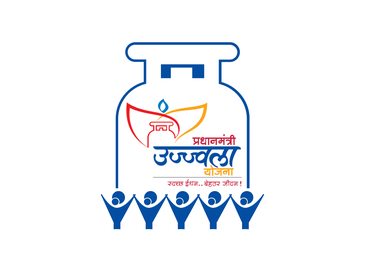
Why in News?
The Andaman & Nicobar Islands have reported a sharp rise in petroleum product consumption, especially diesel and LPG, due in part to the implementation and outreach of the Pradhan Mantri Ujjwala Yojana (PMUY). The scheme has played a significant role in transitioning households to clean cooking fuel.
Overview of PMUY
| Feature | Details |
|---|---|
| Launched | May 2016 by Ministry of Petroleum and Natural Gas (MoPNG) |
| Objective | To provide clean cooking fuel (LPG) to rural and economically disadvantaged households, reducing health risks from traditional fuels like wood, dung, and coal |
| Subsidy Support | – ₹1600 for 14.2 kg LPG cylinder – ₹1150 for 5 kg cylinder – First refill and stove provided free of cost |
| Targeted Outreach | Priority given to states/UTs with lower LPG coverage as of Jan 1, 2016 |
Eligibility Criteria under PMUY 2.0
| Eligible Applicants | Conditions |
|---|---|
| Adult women | Must belong to a household without an existing LPG connection |
| Documentation | Listed in SECC 2011 data or falling under one or more of the following categories: |
- SC/ST households
- PMAY (Gramin) beneficiaries
- Antyodaya Anna Yojana (AAY) beneficiaries
- Most Backward Classes (MBC)
- Forest dwellers, tea and ex-tea garden tribes, residents of river islands |
| Alternative Route | Women not in above categories can still apply by submitting a 14-point self-declaration |
| Exclusion | Male members are not eligible to apply under PMUY |
Health and Environmental Benefits
- Reduces indoor air pollution, thereby lowering the incidence of respiratory illnesses, especially in women and children.
- Decreases dependence on biomass fuels, thus reducing deforestation and carbon emissions.
- Promotes gender empowerment by easing the domestic workload of women.
Impact in the Andaman & Nicobar Islands
- Enhanced LPG access has contributed to a significant increase in cooking gas consumption.
- Aids in reducing dependence on polluting fuels like wood or diesel generators.
- Supports clean energy transition in remote and ecologically sensitive regions.
Summary
The Pradhan Mantri Ujjwala Yojana (PMUY) is a transformative welfare scheme aimed at providing clean cooking fuel to India’s most marginalized women. It improves health outcomes, supports environmental sustainability, and promotes gender inclusion. The scheme’s recent impact in the Andaman & Nicobar Islands highlights its continued relevance in bridging India’s clean energy access divide.
Exam Connect – Possible Questions
Prelims
- What is the objective of the Pradhan Mantri Ujjwala Yojana (PMUY)?
A. Providing electricity to rural areas
B. Subsidizing diesel for transportation
C. Providing clean cooking fuel to underprivileged households
D. Promoting biogas for agriculture
Answer: C. Providing clean cooking fuel to underprivileged households - Which of the following groups is eligible under PMUY 2.0?
- SC/ST households
- PMAY (Gramin) beneficiaries
- Urban salaried women
- Forest dwellers
A. 1, 2 and 4 only
B. 1 and 3 only
C. All of the above
D. 2 and 3 only
Answer: A. 1, 2 and 4 only
- Which statement is correct about PMUY?
A. Men are eligible if they are the head of household
B. The scheme provides a free gas stove and the first refill
C. The subsidy is paid directly to the consumer’s bank account
D. Only urban households are targeted
Answer: B. The scheme provides a free gas stove and the first refill
Mains
- Discuss the role of Pradhan Mantri Ujjwala Yojana (PMUY) in promoting social inclusion, public health, and environmental sustainability.
- Evaluate the impact of PMUY in remote and tribal regions such as the Andaman & Nicobar Islands. How can the scheme be improved for better outreach and effectiveness?
- “Clean cooking fuel is not just an energy issue but a public health and gender justice imperative.” Examine this statement in the context of PMUY.
2. What is the PRASHAD Scheme? – Governance
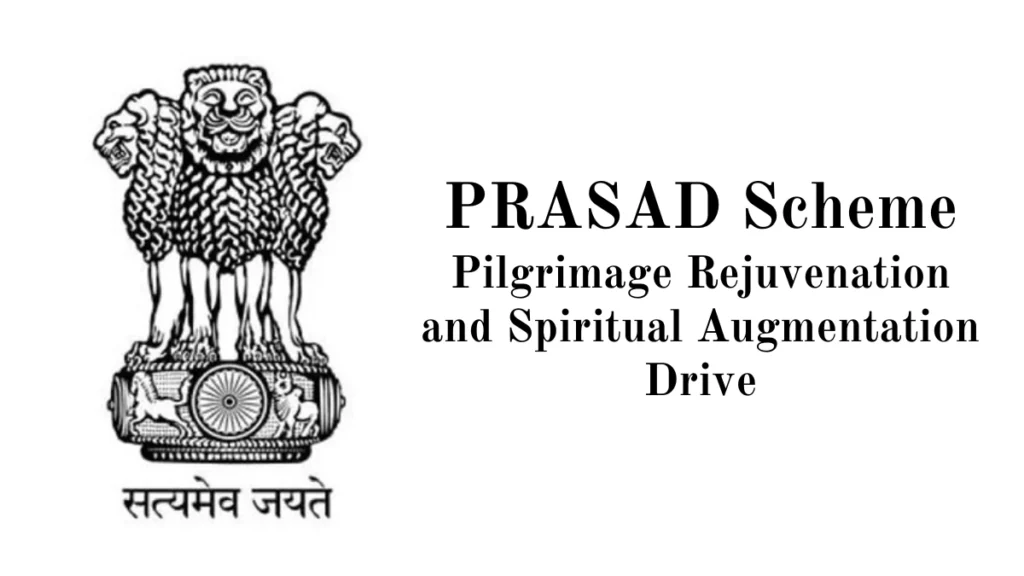
Why in News?
The PRASHAD scheme is in focus due to its involvement in the Chamundi Hills development project in Karnataka, signaling active collaboration between the state and central governments for the development of pilgrimage infrastructure.
What is the PRASHAD Scheme?
| Feature | Details |
|---|---|
| Full Form | PRASHAD: Pilgrimage Rejuvenation and Spiritual, Heritage Augmentation Drive |
| Launched | 2014–2015 by the Ministry of Tourism, Government of India |
| Objective | Integrated development of pilgrimage destinations to promote religious tourism and ensure infrastructure development |
| Focus Areas | Heritage, spirituality, environmental sustainability, and visitor experience at iconic religious sites |
Funding & Implementation
| Type | Description |
|---|---|
| Financial Assistance | Provided to State Governments and Union Territories |
| Public-Private Model | Involves CSR and PPP (Public-Private Partnerships) for faster and diversified development |
| Nodal Ministry | Ministry of Tourism (MoT) |
Infrastructure Components under PRASHAD
| Facilities | Examples |
|---|---|
| Connectivity | Entry points via road, rail, and water transport; last-mile connectivity |
| Visitor Amenities | Restrooms, cloakrooms, drinking water, waiting areas, parking |
| Safety & Accessibility | First aid centers, security systems, signage, eco-friendly transport |
| Cultural Engagement | Craft bazaars, souvenir shops, interpretation centers |
| Sustainability | Area lighting through renewable energy, waste management systems |
| Digital Connectivity | Telecom and internet facilities for digital guidance and accessibility |
Recent Example: Chamundi Hills, Karnataka
- Development under PRASHAD includes:
- Infrastructure upgrades at Chamundeshwari Temple
- Eco-friendly transport systems
- Improved public amenities for pilgrims
- Reflects the scheme’s regional adaptability and holistic approach to pilgrimage site enhancement
Summary
The PRASHAD Scheme is a centrally sponsored initiative aimed at improving pilgrimage infrastructure and ensuring a safe, clean, and enriching experience for domestic and international tourists. Its focus on spiritual tourism, public-private partnerships, and sustainable development makes it an important component of India’s tourism and heritage policy framework.
Exam Connect – Possible Questions
Prelims
- The PRASHAD scheme is implemented by which ministry?
A. Ministry of Culture
B. Ministry of Rural Development
C. Ministry of Tourism
D. Ministry of Housing and Urban Affairs
Answer: C. Ministry of Tourism - Which of the following are covered under the PRASHAD scheme?
- Last-mile connectivity
- Eco-friendly transport systems
- Telecom and internet services
- Free religious pilgrimages for senior citizens
A. 1, 2, and 3 only
B. 2 and 4 only
C. All of the above
D. 1 and 4 only
Answer: A. 1, 2, and 3 only
- What is the full form of PRASHAD in the PRASHAD scheme?
A. Public Rejuvenation and Safety of Heritage and Devotion
B. Pilgrimage Rejuvenation and Spiritual, Heritage Augmentation Drive
C. Program for Reviving Sacred Historical and Devotional Sites
D. Pilgrimage Route Assistance and Sanitation for Heritage and Devotion
Answer: B. Pilgrimage Rejuvenation and Spiritual, Heritage Augmentation Drive
Mains
- Discuss the significance of the PRASHAD scheme in promoting religious tourism and preserving heritage in India. How does it contribute to regional development?
- Evaluate the role of cooperative federalism in implementing schemes like PRASHAD with reference to recent developments in Karnataka.
- “Sustainable tourism infrastructure is key to preserving the sanctity and ecology of pilgrimage sites.” Examine this statement in the context of the PRASHAD scheme.
3. Delhi HC Issues Comprehensive Guidelines for MTP in Sexual Assault Cases – Polity
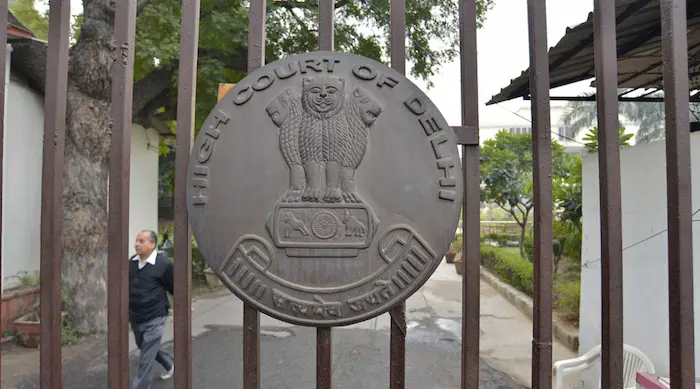
Why in News?
The Delhi High Court has issued comprehensive procedural guidelines for handling Medical Termination of Pregnancy (MTP) in sexual assault cases, especially involving minors, following a case where a 17-year-old rape survivor faced delays and medical mismanagement at a government hospital.
Background of the Case
- A 17-year-old minor survivor was taken to AIIMS Delhi for MTP.
- Despite police presence and an FIR, the hospital refused an ultrasound due to lack of ID proof.
- The Child Welfare Committee (CWC) directed MTP, but the hospital delayed action, demanding an ossification test for age confirmation.
- By the time an ultrasound was conducted, gestation had reached 25 weeks and 4 days, exceeding the legal MTP limit of 24 weeks under the Medical Termination of Pregnancy Act, 1971 (amended in 2021).
Legal Context: MTP Act, 1971 (as amended in 2021)
| Provision | Details |
|---|---|
| Up to 20 weeks | MTP allowed with opinion of one registered medical practitioner |
| 20–24 weeks | MTP allowed for certain categories (rape survivors, minors, etc.) with opinion of two medical practitioners |
| Beyond 24 weeks | Permitted only on court order or in case of severe fetal abnormalities, based on Medical Board recommendation |
Key Lapses Identified by the Court
- Rigid application of diagnostic protocols (e.g., ossification test)
- Failure to act on valid CWC direction
- Ignorance of legal exceptions for rape survivors under the MTP Act
- Psychological trauma and legal rights violation of the minor survivor
Delhi High Court Guidelines for Hospitals
| Area | Directive |
|---|---|
| Identity Verification | No separate ID required if police and FIR are present |
| Immediate Medical Attention | Full medical examination on arrival of survivor, no delays |
| Medical Board | If pregnancy is beyond 24 weeks, form board immediately — no need to wait for court direction |
| Legal Literacy in Hospitals | Standard Operating Procedures (SOPs) for MTP & POCSO must be accessible and known to medical staff |
| Training | Quarterly training for staff on legal and medical duties; nodal officers to be appointed in each hospital |
| Consent | Informed consent must be obtained in a language understood by survivor/guardian |
Delhi Police Guidelines
| Measure | Directive |
|---|---|
| Training | Biannual training for Investigating Officers (IOs) in POCSO-MTP protocols |
| Documentation | Training certification to be reflected in IOs’ service records |
| Timely Action | IOs must promptly take survivors to competent hospitals with complete documentation |
Earlier Court Guidelines
| Date | Directive |
|---|---|
| April 2025 | CWCs must inform Delhi High Court Legal Services Committee (DHCLSC) when referring minors with gestation beyond 24 weeks |
| January 2023 | Urine pregnancy tests mandated for sexual assault survivors; adult survivors must be presented to Medical Board on same day |
Significance of the Judgment
- Enforces constitutional rights of minors under Article 21 (Right to Life & Dignity).
- Ensures effective implementation of MTP and POCSO laws in medical settings.
- Balances medical procedures with survivor-centric justice and timely care.
- Reinforces State accountability in protecting the vulnerable.
Summary
The Delhi High Court’s proactive guidelines aim to rectify procedural shortcomings in handling MTP for sexual assault survivors, especially minors. The judgment ensures that survivors receive timely, dignified, and legally sound medical care by improving coordination between medical institutions, CWCs, and police, and strengthening awareness and training among public officials. These directives mark a crucial step in upholding the legal and human rights of survivors in line with constitutional protections.
Exam Connect – Possible Questions
Prelims
- Under the MTP Act (as amended in 2021), abortion up to 24 weeks is allowed in which of the following cases?
A. On request of any adult woman
B. Only with court permission
C. For special categories such as rape survivors, minors, and disabled women
D. Not permitted under any circumstances
Answer: C. For special categories such as rape survivors, minors, and disabled women - Which institution issues medical directions in cases involving child survivors of sexual assault in India?
A. National Commission for Women
B. Child Welfare Committee (CWC)
C. NHRC
D. Ministry of Health and Family Welfare
Answer: B. Child Welfare Committee (CWC) - Which of the following bodies conducts court-directed abortion when gestation exceeds 24 weeks?
A. Hospital superintendent
B. Police
C. Medical Board
D. Lok Adalat
Answer: C. Medical Board
Mains
- Critically examine the significance of the Delhi High Court’s recent guidelines on MTP in cases involving minor sexual assault survivors. What institutional and legal gaps do they aim to address?
- How do procedural delays in medical termination of pregnancy violate the constitutional rights of sexual assault survivors? Suggest policy reforms for effective implementation.
- Discuss the role of judiciary in safeguarding reproductive rights in India. How does the recent intervention by the Delhi High Court contribute to this objective?
4. Nandur Madhyameshwar Wildlife Sanctuary – Environment

Why in News?
The Maharashtra Forest Department has launched a bus safari service at the Nandur Madhyameshwar Wildlife Sanctuary in Nashik, aimed at enhancing ecotourism, public engagement, and awareness of wetland conservation.
About the Sanctuary
| Feature | Details |
|---|---|
| Location | Nashik district, Maharashtra |
| Nicknamed | “Bharatpur of Maharashtra” – coined by ornithologist Dr. Salim Ali |
| Geography | Part of the Deccan Plateau; features lakes, marshes, floodplains, and riparian forests |
| Recognition | Designated as Maharashtra’s first Ramsar Site (Wetland of International Importance) in January 2020 |
Formation and Ecological Importance
- Formed around the Nandur Madhyameshwar Weir, built at the confluence of Godavari and Kadwa rivers
- Helps regulate water levels and supports wetland biodiversity
- Acts as a critical wintering ground for migratory birds
- Provides flood control, groundwater recharge, and habitat for aquatic and terrestrial species
Flora
- Common species: Babul, Neem, Tamarind, Jamun, Maharukh, Vilayati Chinch, Mango, Pangara, Nilgiri
- Supports a mix of wetland vegetation, trees, and shrublands
Fauna
| Type | Examples |
|---|---|
| Birds | Black Ibis, Spot-billed Duck, Teals, Egrets, Herons, Kites, Osprey, Harriers, Vultures, Sandpipers, Grey Hornbill |
| Mammals | Otters, Palm Civets, Fishing Cats, Jackals, Wolves, Mongooses |
| Reptiles | Various snake species |
Bus Safari Initiative
- Launched by the Maharashtra Forest Department
- Provides eco-friendly access to visitors for bird-watching and biodiversity exploration
- Encourages responsible tourism and supports local livelihoods
- Raises awareness about the importance of wetland ecosystems and conservation efforts
Summary
The Nandur Madhyameshwar Wildlife Sanctuary is a unique wetland ecosystem and a Ramsar site known for its rich bird diversity and ecological significance. With the launch of the bus safari service, the Maharashtra government aims to promote sustainable tourism, enhance conservation awareness, and support local engagement. The sanctuary stands as a model of wetland restoration and community-based ecotourism in India.
Exam Connect – Possible Questions
Prelims
- Where is the Nandur Madhyameshwar Wildlife Sanctuary located?
A. Madhya Pradesh
B. Maharashtra
C. Odisha
D. Andhra Pradesh
Answer: B. Maharashtra - Why is the Nandur Madhyameshwar Sanctuary referred to as the “Bharatpur of Maharashtra”?
A. It is India’s largest tiger reserve
B. It is rich in medicinal plant species
C. It is known for its large population of migratory birds
D. It has the highest rainfall in Maharashtra
Answer: C. It is known for its large population of migratory birds - Which of the following correctly describes the significance of a Ramsar site?
A. Site of industrial importance
B. Recognized for groundwater potential
C. Wetland of international importance under the Ramsar Convention
D. Site identified for archaeological excavation
Answer: C. Wetland of international importance under the Ramsar Convention
Mains
- Wetlands play a crucial role in biodiversity conservation and climate resilience. Examine the ecological significance of the Nandur Madhyameshwar Wildlife Sanctuary.
- Discuss the role of Ramsar sites in India’s environmental protection framework. How can ecotourism initiatives like the Nandur Madhyameshwar bus safari promote conservation and local development?
- Evaluate the challenges faced in managing inland wetlands in India. Suggest measures to balance tourism development and ecological sustainability.
5. Key Facts About the Sharda River – Geography
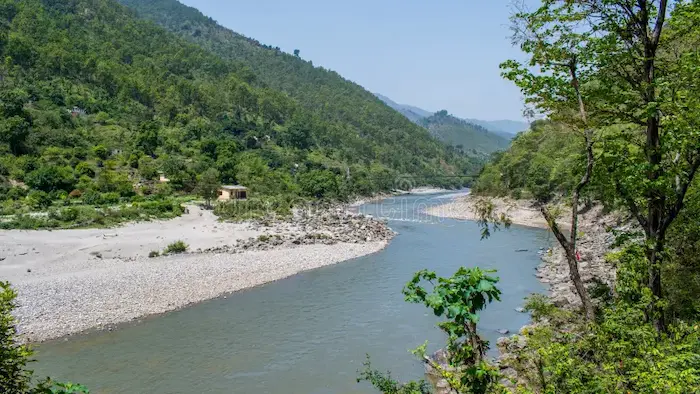
Why in News?
A tragic incident involving the drowning of four teenagers while bathing in the Sharda River has drawn attention to the physical hazards of the river and the need for greater safety awareness among locals and tourists engaging in recreational activities near water bodies.
Geographical Overview
| Feature | Description |
|---|---|
| Location | Flows through northern India (Uttarakhand, Uttar Pradesh) and western Nepal |
| Origin | Arises as the Kali River from the eastern slopes of the Nanda Devi massif in Uttarakhand |
| Length | Approx. 300 miles (480 km) |
| Course | Flows south-southwest, enters the Indo-Gangetic Plain at Barmdeo Mandi (Nepal), and later joins the Ghaghara River, a major tributary of the Ganga |
| Border Role | Acts as a natural boundary between Uttarakhand (India) and Nepal |
Key Tributaries
- Dhauliganga River
- Gori Ganga River
- Sarju River
These tributaries increase the river’s volume, especially during the monsoon, making it both a life-sustaining and potentially dangerous river.
Infrastructure and Irrigation
| Feature | Description |
|---|---|
| Sharda Barrage | Located near Banbasa, Uttarakhand; controls water flow and supports irrigation |
| Sharda Canal | – One of northern India’s longest irrigation canals – Commissioned in 1930 – Crucial for agriculture in Uttar Pradesh and Uttarakhand |
Geographical and Socioeconomic Importance
- Supports agriculture through extensive irrigation systems.
- Enhances hydrological connectivity between the Himalayas and Indo-Gangetic Plain.
- Affects flood dynamics, especially in monsoon months.
- Important for Indo-Nepal relations, both geographically and politically.
Hazards and Safety Concerns
- Rapid flow and depth changes make it dangerous for bathing and recreation.
- Lack of public warning systems and safety barriers near popular access points.
- Tragic incidents emphasize the need for river safety education, especially in rural communities.
Summary
The Sharda River, originating from the Himalayan slopes of Nanda Devi, is a transboundary river flowing through India and Nepal. It serves as an important natural border, irrigation source, and tributary of the Ghaghara-Ganga river system. While vital for agriculture and ecology, recent drownings highlight the river’s hidden dangers and underscore the need for community awareness and infrastructure safety.
Exam Connect – Possible Questions
Prelims
- The Sharda River forms a natural boundary between:
A. Himachal Pradesh and Tibet
B. Sikkim and Bhutan
C. Uttarakhand and Nepal
D. Uttar Pradesh and Madhya Pradesh
Answer: C. Uttarakhand and Nepal - Which of the following is not a tributary of the Sharda River?
A. Dhauliganga
B. Gori Ganga
C. Sarju
D. Betwa
Answer: D. Betwa - The Sharda Canal, one of the longest irrigation canals in North India, originates from:
A. Tehri Dam
B. Sharda Barrage
C. Bhakra Nangal Dam
D. Saryu Reservoir
Answer: B. Sharda Barrage
Mains
- Discuss the geographical significance of the Sharda River in the Indo-Nepal region. How does it influence agriculture, hydrology, and bilateral relations?
- Examine the challenges posed by Himalayan-origin rivers such as the Sharda during monsoon months. Suggest safety and mitigation strategies to prevent drowning incidents and river-related disasters.
- Evaluate the role of infrastructure like the Sharda Barrage and Canal in regional development. What environmental and safety concerns arise from such river interventions?
6. International Civil Aviation Organization (ICAO) – International Relations

Why in News?
India received commendable scores in aviation operations and airworthiness in the latest ICAO audit (conducted by the Directorate General of Civil Aviation (DGCA) in November 2022), reflecting India’s growing stature in global civil aviation standards.
About ICAO
| Aspect | Details |
|---|---|
| Full Name | International Civil Aviation Organization (ICAO) |
| Established | 1947, through the Chicago Convention of 1944 |
| Affiliation | Specialized agency of the United Nations (UN) |
| Headquarters | Montreal, Canada |
| Membership | 193 Member States, including India |
Core Functions of ICAO
| Function | Description |
|---|---|
| Safety Standards | Develops international safety and airworthiness standards for civil aviation |
| Security Guidelines | Sets protocols for airspace security, airport screening, and incident response |
| Global Dialogue Platform | Serves as a clearing house for aviation-related negotiations and cooperation |
| Air Navigation Services | Coordinates global air traffic management, aeronautical charts, and air routes |
| Environmental Performance | Promotes measures to reduce aviation’s carbon footprint and environmental impact |
| Economic Development | Facilitates air transport liberalization, fair access, and dispute resolution |
India’s ICAO Audit Performance
| Indicator | Performance |
|---|---|
| Aviation Operations | Above global average in safety and compliance |
| Airworthiness | Scored highly for aircraft maintenance, inspection, and certification processes |
| Conducted by | Directorate General of Civil Aviation (DGCA), India in coordination with ICAO |
| Audit Date | November 2022 |
This reflects India’s strong regulatory framework, trained personnel, and infrastructure readiness in civil aviation.
Strategic Importance of ICAO for India
- Validates India’s compliance with international aviation safety and technical standards
- Enhances global credibility of Indian airlines and aviation authorities
- Facilitates bilateral air service agreements and access to international markets
- Supports India’s ambition to become a global aviation hub
Summary
The International Civil Aviation Organization (ICAO) plays a central role in ensuring global aviation safety, environmental sustainability, and international cooperation. India’s above-average audit scores in operations and airworthiness signify its commitment to global norms, strengthening its position in the fast-growing aviation sector.
Exam Connect – Possible Questions
Prelims
- The International Civil Aviation Organization (ICAO) is a specialized agency of:
A. World Bank
B. United Nations
C. World Trade Organization
D. International Monetary Fund
Answer: B. United Nations - Which of the following is not a function of ICAO?
A. Developing global air safety standards
B. Promoting international trade in goods
C. Enhancing environmental performance of aviation
D. Facilitating international air transport cooperation
Answer: B. Promoting international trade in goods - The headquarters of the ICAO is located in:
A. Geneva, Switzerland
B. Washington D.C., USA
C. Montreal, Canada
D. Paris, France
Answer: C. Montreal, Canada
Mains
- Discuss the role of the International Civil Aviation Organization (ICAO) in regulating global aviation. How has India’s performance in recent audits impacted its international standing?
- Analyze the strategic importance of ICAO membership for India’s civil aviation sector. How can India leverage its strong audit performance to strengthen international air connectivity?
- India aims to become a global aviation hub. Evaluate the role of international benchmarks such as ICAO audits in achieving this vision.
7. India’s Aviation Safety Reaffirmed Amidst Air India Crash Probe – Governance
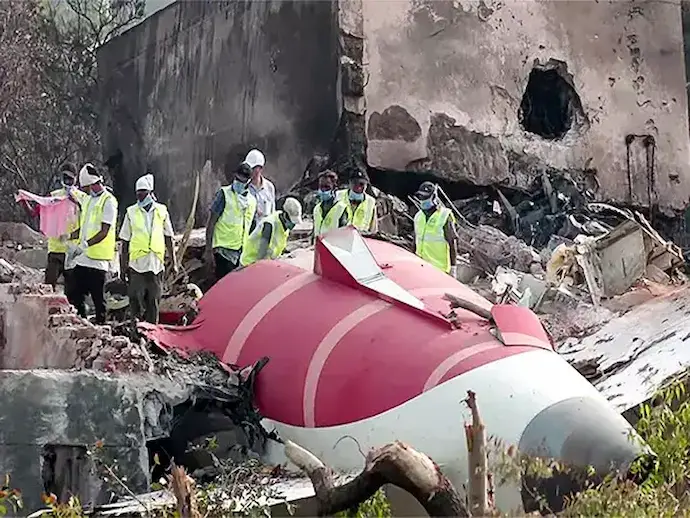
Why in News?
Despite the tragic Air India AI-171 crash (June 13, 2025), India’s aviation safety standards have been reaffirmed by the International Civil Aviation Organization (ICAO). The Directorate General of Civil Aviation (DGCA) scored well above global averages in the ICAO’s recent safety audit conducted in November 2022.
Background: ICAO and USOAP Audit
| Feature | Description |
|---|---|
| ICAO | Specialized UN agency regulating international civil aviation |
| Audit Program | Universal Safety Oversight Audit Programme (USOAP) evaluates compliance with safety standards |
| Audited Body in India | Directorate General of Civil Aviation (DGCA) |
| Audit Year | November 2022 |
| Purpose | To ensure adherence to global aviation safety and regulatory norms |
India’s Performance Metrics in ICAO Audit
| Category | India’s Score | Global Average | US Score | China Score |
|---|---|---|---|---|
| Operations | 94.02% | 72.28% | 86.51% | 90% |
| Airworthiness | 97.06% | – | 89.13% | 94.83% |
Improvement from 2018:
- 2018 Score: 69.95%
- 2022 Score: 85.65%
Reflects systemic improvement in safety, oversight, and regulatory enforcement
Other Safety Endorsements
- FAA Audit (USA):
- India maintains Category 1 status under the International Aviation Safety Assessment (IASA)
- Allows Indian carriers to operate and expand flights to the US
Context: Air India AI-171 Crash (June 2025)
- Incident prompted international investigation:
- US NTSB (National Transportation Safety Board)
- UK’s AAIB (Air Accidents Investigation Branch)
- Outcome: Global collaboration, no immediate regulatory downgrade
- Key Message: One-off incident doesn’t negate structural safety performance
Governance & Institutional Readiness
| Aspect | Description |
|---|---|
| Regulatory Agency | Directorate General of Civil Aviation (DGCA) |
| Crisis Response | DGCA activated crash investigation procedures in coordination with international agencies |
| Learning Loop | Investigations aim to refine safety SOPs and emergency response protocols |
| Forward Strategy | Emphasis on training, surveillance, and technology-enabled aviation safety |
Summary
India’s aviation safety governance has received global validation through the ICAO audit, with scores surpassing global standards in both operations (94.02%) and airworthiness (97.06%). While the Air India AI-171 crash is under investigation, India’s regulatory infrastructure—led by the DGCA—continues to demonstrate international compliance, transparency, and a commitment to public safety in air travel.
Exam Connect – Possible Questions
Prelims
- Which agency conducted the Universal Safety Oversight Audit Programme (USOAP) for India?
A. FAA
B. ICAO
C. IATA
D. DGCA
Answer: B. ICAO - India’s Category 1 aviation safety status is recognized by which country’s aviation regulator?
A. UK
B. Australia
C. USA
D. Singapore
Answer: C. USA - The International Civil Aviation Organization (ICAO) was established under which convention?
A. Montreal Convention
B. Warsaw Convention
C. Chicago Convention
D. Geneva Convention
Answer: C. Chicago Convention
Mains
- Discuss the role of regulatory institutions like the DGCA in maintaining aviation safety. How do international audits such as those by ICAO impact India’s civil aviation governance?
- Examine the importance of international collaboration in aviation safety investigations. Refer to the Air India AI-171 crash as a recent example.
- India is among the fastest-growing aviation markets. What governance mechanisms are needed to ensure air safety amid increasing air traffic?
8. What is Rudrastra? – Defence & Security

Why in News?
India has successfully tested Rudrastra, an indigenously developed hybrid battlefield drone, marking a technological milestone in the country’s defence and unmanned warfare capability. The trial was conducted at the Pokhran testing range, demonstrating its advanced operational features and combat readiness.
What is Rudrastra?
Rudrastra is a hybrid Vertical Take-Off and Landing (VTOL) drone, developed by Solar Aerospace and Defence Limited (SDAL). It combines the vertical agility of a helicopter with the long-range cruising capability of a fixed-wing aircraft, enabling versatile, stealth-based battlefield operations.
Key Features of Rudrastra
| Feature | Description |
|---|---|
| VTOL Capability | Takes off and lands like a helicopter; flies like a plane in cruise mode |
| Targeting System | Equipped with smart warheads for anti-personnel operations |
| Strike Ability | Can carry and drop airburst munitions that detonate near the ground to cover wide target areas |
| Surveillance | Streams real-time video feeds and returns autonomously after mission completion |
| Role | Functions as a “stand-off” weapon, allowing safe-distance strikes on enemy camps, artillery, and terrorist hideouts |
| Autonomy | Capable of autonomous navigation, targeting, and return-to-base functions |
Operational Metrics from Pokhran Test
| Metric | Value |
|---|---|
| Flight Range | Up to 170 km |
| Endurance | Around 90 minutes of continuous flight |
| Mission Capabilities | Surveillance, target acquisition, munition delivery, real-time communication |
Strategic Importance
- Enhances India’s deep strike capabilities without risking soldier lives.
- Offers a cost-effective, reusable, and low-detection alternative to traditional manned airstrikes.
- Adds a tactical edge in high-altitude warfare, border skirmishes, and counter-insurgency operations.
- Boosts Aatmanirbhar Bharat (self-reliance in defence) initiative by advancing indigenous UAV (unmanned aerial vehicle) production.
Summary
Rudrastra is a next-generation battlefield drone, combining VTOL agility, long-range autonomy, and precision firepower. Successfully tested in Pokhran, it signifies a major leap in India’s indigenous drone warfare capabilities, offering a stand-off strike platform ideal for covert missions, border defense, and anti-terror operations. As part of India’s evolving military doctrine, Rudrastra is a vital tool in modern, technology-driven combat scenarios.
Exam Connect – Possible Questions
Prelims
- Rudrastra, recently in news, is a:
A. Long-range ballistic missile
B. Anti-satellite laser system
C. Hybrid vertical take-off and landing (VTOL) drone
D. Hypersonic cruise missile
Answer: C. Hybrid vertical take-off and landing (VTOL) drone - Which of the following is not a feature of Rudrastra drone?
A. Airburst munition delivery
B. Real-time video surveillance
C. Crewed piloting system
D. Autonomous return function
Answer: C. Crewed piloting system - The Pokhran testing range is located in which state?
A. Rajasthan
B. Gujarat
C. Punjab
D. Haryana
Answer: A. Rajasthan
Mains
- Discuss the significance of indigenous defence technologies like Rudrastra in enhancing India’s strategic autonomy and battlefield readiness.
- Evaluate the role of unmanned aerial vehicles (UAVs) like Rudrastra in modern warfare. How do they change the dynamics of military engagement and counter-terror operations?
- Examine the importance of integrating domestic innovation and private-sector participation in defence R&D with reference to Rudrastra.

